News
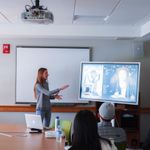
Finding Your Passion and Changing Your Mind
This week, our seniors presented the results of their senior thesis projects to classmates, friends, family, teachers, and mentors. The breadth of topics was as stunning as the depth of the exploration. I heard about correlations between green spaces in Boston, race, and socioeconomics; irreducible polynomials over finite fields; depictions of witches in literature from Medea to the present; Beethoven’s Tempest Sonata; stem cells and transplantable heart tissue; quality of life outcomes in adolescent female dancers; and the impact of certain pollutants on coral native to New England. My only regret is that I could not attend more!
I love that the BUA academic experience culminates with students identifying areas of passion and diving deep; they find agency and purpose in applying what they have learned. And for some of them, the topic they explore will spark something bigger: a college major, a dissertation topic; a career. I worry, though, that students at this age might think that they are somehow “stuck” with the passion they identify at 17 or 18 years-old and feel pressure to choose a path for the rest of their lives. Nothing is further from the truth. I have talked to dozens of graduates who, in their early 30s are already in their second careers. I am on my third – happily so! The freedom to switch gears in a career is one of the greatest gifts of an education like the one students receive at BUA – a freedom that many people do not have. Some of the happiest people I know found something interesting and meaningful to do early in their careers. They gave it their full energy. Then, when the time was right, they took a chance by stepping off the track to try something new. An education like this means that doors are seldom truly closed and new one are within reach.
BUA Computer Science Club Hosts Inaugural Hackathon
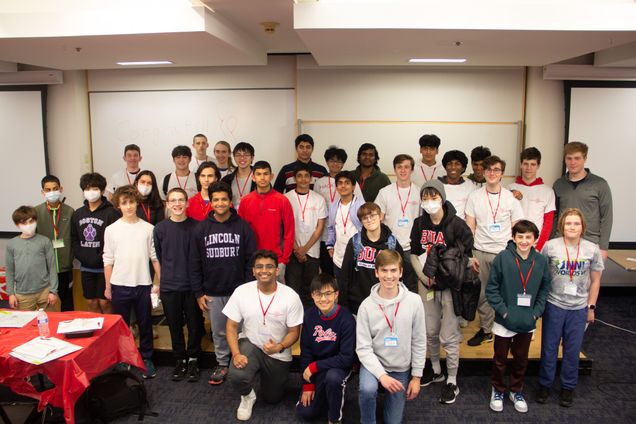 On April 2, 2023, Boston University Academy hosted its first-ever hackathon, Hack@BUA, attracting 42 students from 14 schools in the Greater Boston area. Hack@BUA was the brainchild of the BUA Computer Science Club, and was capably organized and led by Rohan Biju ‘23, Joie Liu ‘23, and Alvin Lu ‘23, with the assistance of many BUA student volunteers. The daylong hackathon was held at Boston University’s Photonics Center.
On April 2, 2023, Boston University Academy hosted its first-ever hackathon, Hack@BUA, attracting 42 students from 14 schools in the Greater Boston area. Hack@BUA was the brainchild of the BUA Computer Science Club, and was capably organized and led by Rohan Biju ‘23, Joie Liu ‘23, and Alvin Lu ‘23, with the assistance of many BUA student volunteers. The daylong hackathon was held at Boston University’s Photonics Center.
Hack@BUA attracted a diverse group of students from public and independent middle and highs schools in and beyond Boston, including Boston Latin School, Dedham Country Day School, Fuller Middle School, Nobles and Greenough, Middlesex School, Saint Columbkille, Xaverian Brothers High School, Needham High School, Franklin High School, Diamond Middle School, Lincoln-Sudbury High School, St. John's High School, and Westborough High School. Participants ranged in age from 11 to 18, making for a dynamic and spirited event.
The hackathon featured three compelling tracks focusing on the themes of Sustainability, Healthcare, and Student Life. Over the course of eight hours, teams of 3-5 students worked together to conceive, develop, and code an application or project addressing a critical need in one of the above tracks.
Three BUA alumni judges were on hand to provide guidance and expertise, and to evaluate each project and determine the winners: Emilio Lattore ‘19, Duarte Albuquerque ‘21, and Phevos Paschalidis ‘21.
The top prize was awarded to Ride Clean, an innovative application that optimizes carpooling routes for maximum fuel efficiency. Using Dijkstra's algorithm, the app calculates the shortest path between multiple destinations, resulting in a sustainable and cost-effective solution for daily commuting. Even more impressive, the team built the software entirely from scratch, rather than relying on pre-existing templates. Their prototype featured seamless integration between the back end and front end, resulting in a polished and functional product. In addition, the team exhibited excellent collaboration and a deep understanding of the project, which made for a truly outstanding submission.
Taking home the second-place prize was Noter, a unique application that leverages OpenAI's API to create an AI-powered notebook. With the click of a button, users can summarize text and generate AI-generated quizzes on the topics covered in their notes. The product's implementation was truly fascinating and demonstrated an innovative use of cutting-edge technology. Noter capitalizes on the current AI craze and provides a new and exciting way to approach note-taking and studying. Overall, the judges were impressed by the team's creativity and execution.
In third place was Patient Monitor, an impressive project that aims to improve patient care and hospital efficiency. The device features a clever combination of cameras and speech-to-text technology to monitor patients and detect keywords and phrases like "ouch" or "that hurts." With this information, the device alerts doctors and nurses to attend to patients who require assistance, eliminating the need for constant monitoring by a nurse.
By all accounts the inaugural Hack@BUA was a smash success, and Boston University Academy looks forward to instituting the hackathon as an annual signature event.
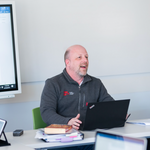
The Things Teachers Say
Long-time history teacher Dr. Jim Davis gave a masterclass last night to a group of parents and alums exploring existentialism, which is also the topic of a popular senior elective he has taught for many years. As he discussed Søren Kirkegaard and Frantz Fanon, BUA graduates who took the class years ago started to engage in the online chat. Then the questions started, then an open-ended discussion. An hour-long class stretched to 90 minutes – in good BUA fashion. Several alums told Dr. Davis that their time with him in this class years ago – the readings, the discussions, the questioning – had not just stayed with them but shaped who they are and how they think about the world. Some talked about how the class helps them think about our nation’s political challenges. Others talked about how those discussions have helped them work through personal challenges.
In a 1907 autobiographical work, Henry Adams famously wrote, “A teacher affects eternity; he can never tell where his influence stops.” Dr. Davis’s masterclass was a powerful reminder of the power of a loving, inspiring teacher.
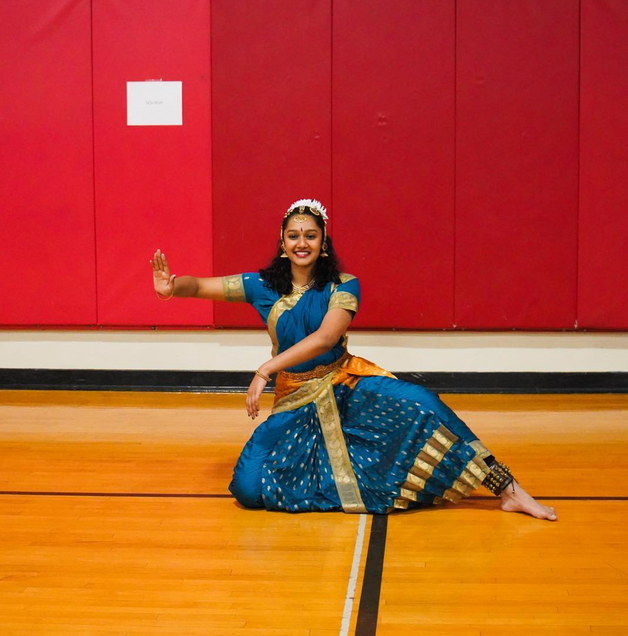
A Community That Helps You Be Yourself
Over a span of five days, our community hosted two wonderful events. One was our Be Together multicultural potluck dinner. Families of students from all grades gathered together, each bringing a dish reflecting their family’s identity and traditions. Several students also performed that night in the same spirit – from Indian classical dance to Greek zeibekiko. A few days later, we hosted our annual Classics Declamations, where a dozen students recited – in a spirited way! – passages in Greek or Latin in front of the whole school.
In both instances, the response from the audience to the student performances was beautiful: riotous applause and loving hollering followed by pats on the back and warm hugs. Teenagers are often encouraged to “be themselves.” That does not – and cannot – happen in a vacuum. I take great pride in this being a community where, when young people take risks, try something new, and make themselves vulnerable, they are greeted with acceptance, love, and admiration. That is fertile soil for healthy development. And it is what all kids deserve.
BUA English Teacher Ariana Kelly Wins Jack Hazard Fellowship
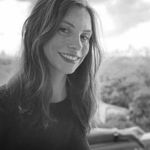 BUA English teacher Ariana Kelly was named a winner of the 2023 Jack Hazard Fellowship, sponsored by the New Literary Project. The Jack Hazard Fellowship is awarded annually to fourteen creative writers who teach high school -- an innovative, groundbreaking initiative that awards $5,000 to support the artistic endeavors of high school teachers from around the country. Read more about this year's Jack Hazard Fellows here.
BUA English teacher Ariana Kelly was named a winner of the 2023 Jack Hazard Fellowship, sponsored by the New Literary Project. The Jack Hazard Fellowship is awarded annually to fourteen creative writers who teach high school -- an innovative, groundbreaking initiative that awards $5,000 to support the artistic endeavors of high school teachers from around the country. Read more about this year's Jack Hazard Fellows here.
Jack Hazard Fellows are fiction, creative nonfiction, and memoir writers who teach full-time in an accredited high school in the United States, and "represent NewLit’s full-throated commitment to support writers across generations, communities, and divides. The financial award intends to enable these creative writers who teach to concentrate freely on their writing for a summer."
BUA's Elisha Meyer sat down with Ariana Kelly to learn more about her writing projects and process:
Elisha Meyer: Congratulations on being the recipient of a 2023 Jack Hazard fellowship! Tell us about your ongoing project – what will you be working on under the auspices of this fellowship?
Ariana Kelly: I’m working on finishing a collection of personal essays titled Lay Me Down Like A Stone about the perils, particularly for women, of seeking higher elevations of experience, class, and power. The essays discuss the collateral damage—to ourselves, other people, and the environment—that we incur along the way, and what gets left behind as our trajectories take us further from our families and landscapes of origin. Ultimately, the essays catalog a lot of loss, but the book lands on ways I (and all of us) can reimagine more sustainable ways of living and relating to one another.
EM: Where do you find inspiration for your writing?
AK: Anything and everything, but most often intense personal experiences I try to understand through writing.
EM: How does your work as a high school English teacher inform and shape your writing, and vice-versa?
AK: Teaching and writing allow me to spend time exploring language and ideas, work I find meaningful and fulfilling. However, while writing is a largely solitary endeavor, teaching puts me in conversation all day. That balance is fruitful for me. In a world that often feels frenetic and unstable, the ability to sit in a circle around a seminar table, discussing great literature with brilliant kids feels like an amazing luxury. I’m grateful.
EM: Is your writing process different depending on the genre? For example, if you’re writing poetry vs. memoir or fiction?
AK: Yes. An essay for me will usually begin with an idea or feeling, but a poem will begin with a piece of language or an image that I find arresting. While I really try to think through things in essays, in poems I let my subconscious take over and don’t worry so much about making sense.
EM: What’s your favorite place to write?
AK: I love writing in my office, which is filled with books and art that inspire me, but I also love writing in hotels. I don’t know why–something about the combination of anonymity and safety.
EM: What time of day do you like to write?
AK: Morning–because that’s when my head is clearest.
EM: Do you have a favorite writing snack?
AK: I don’t really snack as I write, but I do drink gallons of sparkling water and tea.
EM: How do you overcome writer’s block?
AK: Usually by reading, but also by taking time away from a project, then returning to it with fresh eyes.
EM: What is your editing process like?
AK: Agonizing! When I have an idea for an essay I try to get as much down as possible, knowing that it will likely take me many months, if not years, to complete a draft that even remotely expresses the underlying ideas I’m trying to explore. My favorite part of the writing process is when I have the essay’s arc down, and I can focus on building sentences I like. That’s when writing becomes like a physical craft to me, like making a quilt or building a house.
EM: There’s nothing more intimidating than a blank page. What advice would you share with aspiring student-writers that have trouble getting started?
AK: I would say that you should start by keeping a notebook about what interests you in the world, whether it’s an interaction, an image, a sound, a thought, a feeling, and then write to figure out what compelled you in the first place. That’s a good starting point for any piece of writing that might turn into something larger, be that a poem, essay, short story, novel, etc.
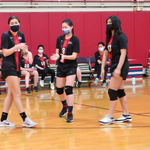
Trying Something New
I popped by a volleyball practice in the gym earlier this week. Picture two nets set up across the gym, with two dozen players on the courts and about a dozen more on the sidelines waiting to rotate in. There were spirited celebrations for points won, along with quick support for a teammate’s mistake. Intensity mixed with joy under the careful oversight of Mr. Seth – math teacher by day, volleyball coach by afternoon!
Here’s what’s most interesting to me: the majority of the players had never played volleyball in any organized way before coming to BUA. I love that these students feel the freedom and comfort to try something brand new. They are willing to take a chance, show vulnerability, admit that they have room to grow, and risk making mistakes in front of their peers. That is an extraordinary thing at any age, but particularly in adolescence. It reminds me of Carol Dweck’s important research, encapsulated in her book Mindset, revealing that people who see key traits as malleable (growth mindset) vs set (fixed mindset) are in fact significantly more likely to improve and perform better across a range of challenges. I am grateful to be in a community that allows young people to feel comfortable taking risks and trying new things, and hope that the same spirit stays with them, not just through high school but for the rest of their lives.
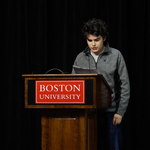
Students Finding Purpose through Action
What does it take to convince Town Hall to start a bike-to-school day?
On Tuesday, one of our seniors gave a talk at our all-school meeting about his year-long quest to make change in his town. Motivated by his passion for combating climate change and inspired by models from other countries, he began reaching out to local nonprofits, members of town government, and local school officials. Some doors opened. Many stayed closed. He kept at it, building allies, following leads, and refining his pitch. He experienced the sometimes frustratingly byzantine nature of local politics and the excitement of discovering allies in that system. He is now on the precipice of seeing his dream of a bike-to-school day in his town come to life and perhaps inaugurating a tradition.
Last year, our faculty and staff read William Damon’s The Path to Purpose. Damon, in a deeply evidence-based way, argues that fulfillment and happiness in life are deeply linked to purpose, even – or perhaps especially – for young people. Purpose goes beyond “following your passion.” People find purpose when they devote themselves to something bigger than themselves and something that has a positive impact on others. In sharing his story at assembly, this student provided a model of how – even as a high schooler – our students can find fulfillment and meaning through action. Purpose can come from painting a powerful mural that tens of thousands of people see each day and from being kind to a friend who is struggling. It can come from doing published research in a cancer lab and from starting a club with your friends. One of the greatest gifts we can give our students is the chance to find purpose while they are here, in hopes that that experience will build lifelong habits that will sustain them on their journeys. And our world will be better for it.
The Importance of Student-Led Discussions in a Post-Truth Age
It has been a fun week, despite the messy weather. On Tuesday afternoon, the students eeked out a narrow victory against the faculty and staff in a spirited basketball extravaganza, complete with a halftime show! Tonight many students will stay on campus for the semiformal dance. And with spring break around the corner, spirits are high.
I visited two history classes earlier this week and, in both, observed students speaking much more than their teachers. Juniors in American history were discussing our country’s overseas entanglements and imperialism in the late 19th and early 20th century. Ninth graders were discussing the Etruscans, Greeks, and Phoenicians and contrasting the historical record of those civilizations with the contemporary Roman accounts. Active, student-led discussions have long been a hallmark of what we do, particularly in the humanities. Teachers, as the experts in the room, frame up interesting questions and periodically enter the conversation to offer a perspective that the students may be missing. Of course they do and they should; we have deeply knowledgeable teachers who can draw connections our students can’t and inspire these young people around the table. But it is largely up to the students to test their ideas against their classmates and assess the strength of their peers’ arguments.
This approach has never been more important. Consider the sheer number of opinions and (sometimes false) narratives our students encounter every day on television and social media. The days of Walter Cronkite as the grandfatherly and neutral arbiter of what is important and true are long past. It is up to all of us to make those determinations for ourselves, and this will be even more true in the years to come. I’m proud of our teachers for doing their part to prepare students for that future.
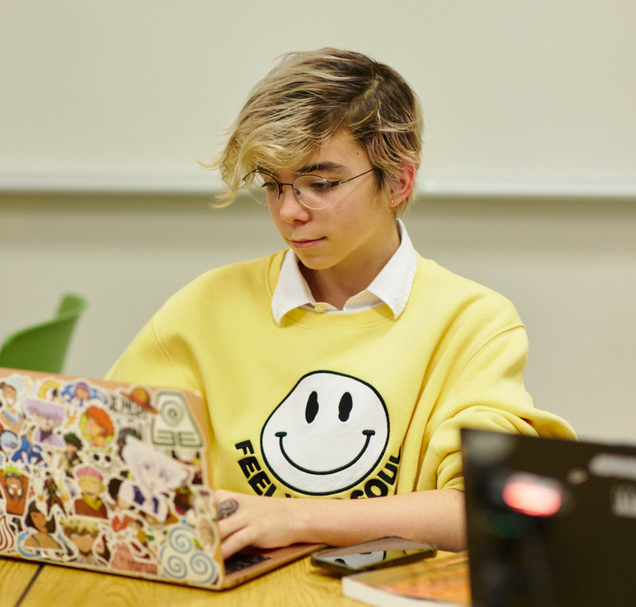
Joyful Learning and Shakespearean Knock Knock Jokes
In a funny scene in Act II of The Tragedy of Macbeth, a drunken porter responds to a repeated “knock, knock, knock” at the door to the castle imagining that he is greeting sinners at the gates of hell. I visited a ninth-grade English class earlier this week where students were acting out that scene for their classmates. With a wonderfully convincing and slurred Scottish accent, a student played the porter’s role to the amusement of the whole room; he was the only one not laughing! What struck me most was that the students were laughing along with the jokes in the way Shakespeare intended – delighting in the imagery, linguistic tricks, and performance.
How lucky are we to be at a school where we all – teachers and students – find so much joy in learning? I imagine that for some of us reading Shakespeare in high school felt like an intimidating chore or a struggle in translation. For these students, it was fun. That joyful approach to learning – fostered by the teacher and amplified by the students – paves the way for deep engagement and real understanding. I see it all around, across disciplines. I feel grateful to be at a place where joy travels hand in hand with learning and a deep sense of obligation to preserve that core piece of who we are.
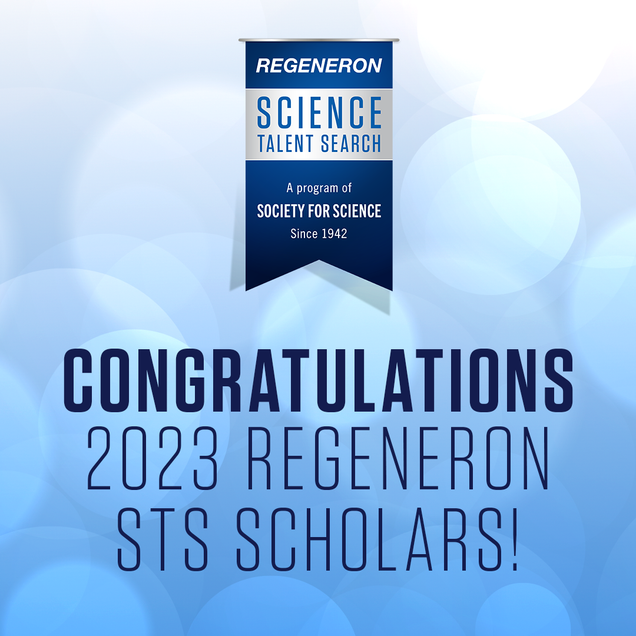
Three BUA Seniors Selected as Top 300 Scholars in 2023 Regeneron Science Talent Search
 Three seniors at Boston University Academy -- Alex Jin '23, Alvin Lu '23, and Joseph Wang '23 -- were selected as top 300 scholars in the 2023 Regeneron Science Talent Search, the nation’s oldest and most prestigious science and math competition for high school seniors. BUA is one of the few high schools to have three scholars named in the top 300 list.
Three seniors at Boston University Academy -- Alex Jin '23, Alvin Lu '23, and Joseph Wang '23 -- were selected as top 300 scholars in the 2023 Regeneron Science Talent Search, the nation’s oldest and most prestigious science and math competition for high school seniors. BUA is one of the few high schools to have three scholars named in the top 300 list.
The top 300 scholars were chosen “based on their outstanding research, leadership skills, community involvement, commitment to academics, creativity in asking scientific questions and exceptional promise as STEM leaders demonstrated through the submission of their original, independent research projects, essays and recommendations,” according to a press release issued by the Society for Science, the sponsor organization of the Regeneron Science Talent Search.
Each student’s winning project forms the basis of their senior thesis, an independent research project that is the culmination of a student’s academic career at BUA. Alex, Alvin, and Joseph share details of their research, below.
Alex Jin’s project, titled “A SEIRD+V Model for the Effect of Vaccination and Social Distancing on SARS-CoV-2 Infection and Mortality,” creates an epidemiological model and metric to guide public policy in the face of future pandemics:
“Respiratory viral pandemics have occurred repeatedly over recent decades, including Severe Acute Respiratory Syndrome Coronavirus (SARS-CoV-1) in 2002-2004, H1N1 influenza in 2009, Middle Eastern Respiratory Syndrome Coronavirus (MERS-CoV) in the 2012 and again in 2019, and SARS-CoV-2 since 2019. While attempts at preparedness have been made, public health infrastructure in multiple countries have been inadequate to meet the challenges of the SARS-CoV-2 pandemic.
Modeling epidemics allows for quantifiable, anticipatory planning prior to pandemic occurrence and for policy adaptation during a pandemic itself. I created an epidemiological model (SEIRD), including vaccine efficacy, the vaccination rate of the population, degrees of social distancing, and a thresholding metric to understand the stringency required from these parameters to achieve a pre-specified target for peak infection percentage and total mortality in a population. For example, if policy makers aim to limit peak infection rate in a community to 5%, what goals should they have for vaccination rate, social distancing, etc.? This study advances knowledge in its representation of multiple public policy tools in an integrated analytic model and in its flexibility to allow modification of critical parameters to achieve utility for future pandemics.”
Alvin Lu’s project, “Dynamic Genome-Scale Metabolic Modelling Reveals Optimal SARS-CoV-2 Resource Partition Ratio,” develops a novel framework that simulates virus-infected cell metabolism to predict potential drug targets. Alvin undertook his research under the guidance of Daniel Segrè, BU Professor of Biology, Bioinformatics, and Biomedical Engineering and leader of the Segrè Lab in BU’s Department of Bioinformatics. Alvin explains:
“Unlike previous works, this model is able to evaluate changes over time and partition resources, enabling both the virus and the host to compete and grow together. We evaluated the effect of this partition and determined that there was a ‘virus-optimal partition,’ the percent of resources allocated to the virus that generates the most production of virions.
We tested this framework on a lung cell model and integrated a new reaction to simulate virus production, accounting for lipids as well as proteins. We prove that this change significantly alters the host cell’s metabolism and provides two new drug targets. Finally, we confirmed our results by supporting them with values from pre-existing literature.”
Joseph Wang’s project is titled “Study of Behaviors of Bilinear Forms Under Field Extensions.” He shares:
“Motivated by a theorem of Riess, we studied the behavior of nonsingular bilinear forms under field extensions. In particular, given a base field k, we explore if a property that is called Bk in this article is preserved by field extensions. Riess’s theorem shows that under some mild conditions, the property Bk is preserved for field extensions C/R and R/Q, giving some insight into Beauville's weak splitting conjecture. We introduce new ideas to show that, under mild conditions, the property Bk is preserved under any field extensions, so long as k is an infinite field."
***
A total of 1,949 students around the country entered the competition this year; the top 300 scholars represent 194 American and international high schools in 35 states and China. In recognition of this achievement, each scholar will each receive $2,000. BUA will also receive $2,000 per scholar to fund STEM activities at the school. Alex, Alvin, and Joseph join BUA alumna Zoe Xi '22 in the of pantheon of recent BUA Regeneron Science Talent Search scholars. Zoe's project, entitled "Approximation Algorithms for Dynamic Time Warping on Run-Length Encoded Strings," was selected as a top 40 project in the 2022 competition.
The top 40 2023 Regeneron Science Talent Search finalists will be announced on January 24.